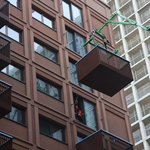This isn't all that far off the original schedule. According to VIA Rail's presentation at the
NGEC 2020 Annual Meeting, the schedual was as follows:
- First revenue Trainsets: Q2 2022
- Last Trainset: Mar 2024.
And then in their presentation at the
NGEC 2022 Annual Meeting it says:
- Targeting start of passenger service: Q4 2022
Given the known delay of the start of passenger service and that the whole world is having supply chain issues, is it really any suprise that the delivery of the last trainset would be delayed from Mar 2024 to sometime in 2025? Trainsets aren't off the shelf items that you can order on Amazon and expect to receive the next day.




